Without Rosaceae, where can there be spring?
It is said that there are about 124 genera and more than 3,300 species of Rosaceae, and most of the flowers we see most often belong to the Rosa family, which is more powerful than any department in human history.
Produced by: China Popular Science Expo
In spring, the earth warms up and everything begins to stir. Can’t you hold back the heart of going out for a spring outing? Anyway, Xiaobian really wants to skip work and enjoy the flowers!It is said that there are about 124 genera and more than 3,300 species of Rosaceae, and most of the flowers we see most often belong to the Rosaceae family.Its variety is more powerful and huge than any department in human history. It is really the "one bully" in spring!
Rosaceae is divided intoFour subfamilies, Spiraea subfamily, Applesubfamily, Rosasubfamily and Lyiaceae.And today we mainly come to know the two most common subfamilies.Apple subfamily and Li Yake, know 7 genera,Peach, plum, apricot, pear, cherry, apple and papaya.Looking at these genera, this small series said that flowers are not beautiful, I don’t care anymore, I just drool a little!

But I will try to hold back. After all, I’m not a blogger. I’m a serious science popularization gentleman. Come and have a look!
I. (Lyiaceae) Plum
1. Li
it is saidLi Bai, a teenager, wrote a poem "Li Hua is in full bloom and a tree is white"Let his father feel that his son can become a great poet when he grows up, so he takes two words from the poem as the name of Li Bai.The beginning of the story is so unexpected, although I don’t know whether it is true or not, but that poem does write the characteristics of Li Hua’s gray.
Plum, flowers and leaves come out together, two or three flowers are born on the branches, the stamens are yellow and the pedicels are long.
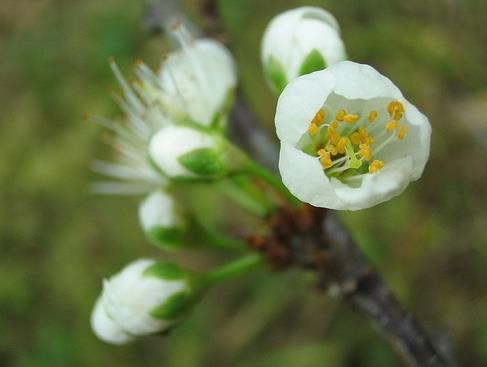
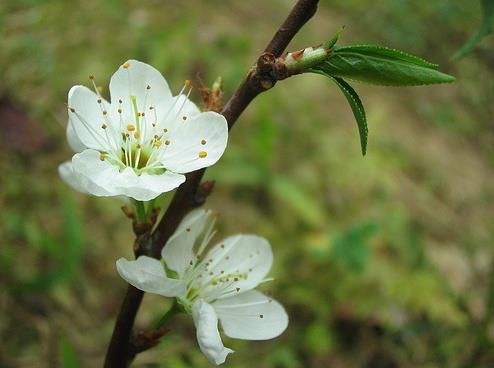
2. Purple leaf plum
Originally a purple leaf variety of cherry plum, it has become one of the common ornamental trees because its purple leaves are dazzling in a clump of green.So you are a product of mutation.
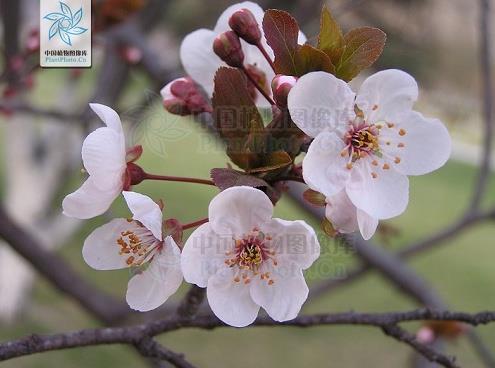 Image source ppbc: Liu Bing
Image source ppbc: Liu Bing2. (Lyiaceae) Sakura
sakura
Cherry blossoms generally have slender flower stalks, corymbose inflorescences, notched petals and horizontal stripes on branches. At present, there are two common cherry blossom varieties in China, one is Hejin Sakura and the other is Yoshino Sakura.Remember the romance of five centimeters per second under the cherry trees in those years?
1. Hejin Sakura,Named after its discovery in Hejin Town, Japan, it is the earliest cherry blossom. Those who go to Japan to enjoy cherry blossoms very early are mostly Hejin Sakura, which is the representative of early cherry blossoms. The petals are dark pink and the buds are light yellow. The flowers and leaves alternate with each other, which is beautiful.
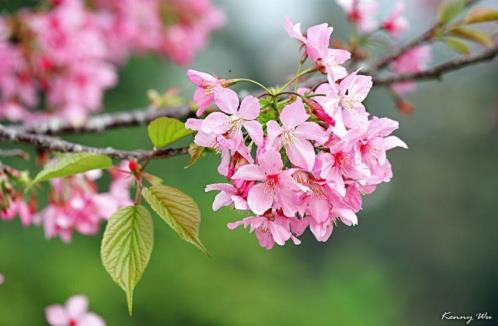 Image source: www.kenphoto.com
Image source: www.kenphoto.com 2, Yoshino Sakura dyed wellAlso known as "Tokyo Sakura" or "Japanese Sakura". It is a variety cultivated after artificial hybridization. The flowers are pale pink when they just bloom, and gradually turn white after they are completely open. The stamens are shorter. Pink and white flowers are adorned with branches, gorgeous and elegant, and are loved by more and more people.
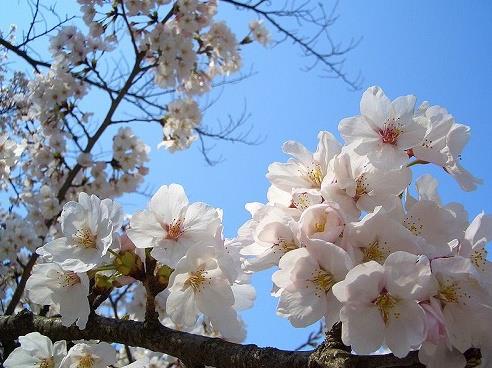 Image source: wikipedia
Image source: wikipedia Iii. Peach (Lyiaceae)
peach
Because of Tao Yuanming’s Peach Blossom Garden, Taolin has been the representative of the ideal world since ancient times. The peach blossom originated in China is the object of praise from ancient times to the present."The peach dies, burning its splendor."Pale pink flowers, bright and charming.So how do you distinguish the blossoming peach blossoms from the flowers?
When a peach blossom is in full bloom, it usually grows new leaves, showing the state of flowers and leaves coming out together. In addition, a peach blossom is generally a solitary flower, that is, a flower is born alone on a twig. Having no or extremely short pedicels.
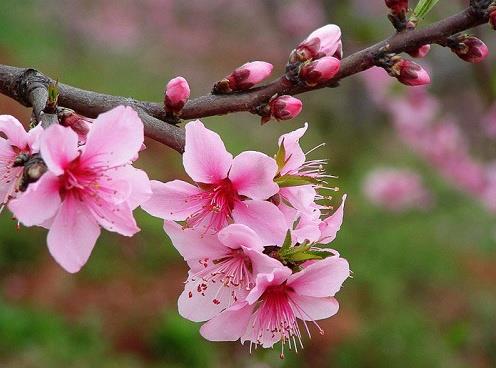 Image source: wiki
Image source: wiki Iv. Apricot (Lyiaceae)
Step 1: apricot
The Ming Dynasty’s Guang Qun Fang Pu describes apricot flowers:"Leaves like plum, big difference, reddish in color, round and sharp. The flowers bloom in February, and the unopened color is pure red. When they bloom, they are white, slightly reddish, and when they fall, they are pure white. "Apricot flowers are pure red when they are not in bloom, which means the deep red calyx of apricot flowers. Dark reddish-brown branches and calyx are signs of apricot flowers. In addition,The calyx is erect from bud to first bloom, and often reflexed after flowering.. Petals are nearly round, without pedicels, and flowers first and then leaves. These are the distinguishing features of apricot flowers.

 Image source ppbc: Zhu Xinxin
Image source ppbc: Zhu XinxinThis one can clearly see the sepal inversion.
5. (Malinae) Pyrus
pear
Cen Can’s "is like a spring gale, come up in the night and blowing open the petals of ten thousand pear trees" compared Snow White to a pear flower, which, though metaphorically speaking, also highlighted the biggest feature of pear flower, namely, its white flowers.. And the purple-red stamens in the white petals have become a unique representative of pear flowers. Of course, as an apple subfamily, 2-5 stigmas are also an important symbol to distinguish it from the species of Lyriaceae.

(Malinae) Malus
"Qunfangpu" records that "there are four kinds of begonia, all of which are woody: Begonia sessilifolia, Begonia pendula, Begonia Xifu and Begonia papaya, which are commonly called’ four kinds of begonia’". However, these four products belong to two genera in botany. Malus pendula and Malus Xifu belong to the genus Malus, while Malus sessiliflorus and Malus papaya belong to the genus Malus.
1. Begonia pendulaThe petals are pink. With more and more cultivated species, there are double petals and white flowers, but the name of the flower, the long drooping filiform pedicel and the upside-down flower are the identification points of Begonia pendula.

2. Xifu BegoniaIt is called "sea red" in Compendium of Materia Medica and can be used as medicine. Petals are mostly pink. Compared with the shyness of drooping begonia, Xifu begonia proudly blooms with a gesture of looking up at the sky.One is like a little jasper, and the other is like a good family. Do you know how to distinguish?

Seven, (Apple subfamily) Chaenomeles
1. Begonia pedunculata
"Trivial Record" once said: "Cherry grafted with stem begonia becomes drooping begonia; If the pear tree is attached to the stalk, it will become Xifu. "It can be seen that there are genes of begonia sessilifolia in the above two kinds of begonia with national color and fragrance. However, compared with the pink and delicate of Malus pendula and Malus Xifu, Malus pedunculata has its own unique charm.
Crabapple with stem is also called wrinkled papaya, and it is recorded as "papaya" in Compendium of Materia Medica. Its flowers bloom before the leaves, with brilliant red, light red or white. Pedicels are so short that they stick to branches, hence the name of sticking pedicels.

2. Papaya begonia
In the Book of Songs, papaya begonia is called Mutao.It is also called "Chaenomeles tomentosa" in Chinese flora. Its petals are reddish or white, and the fruit is fragrant. The flowers of Begonia papaya and Begonia sessilifolia are equally short and thick or nearly sessile, so it is difficult to distinguish them. However, Begonia sessilifolia is usually a cluster of 3-5 flowers, while Begonia papaya is a cluster of 2-3 flowers.

I don’t know if you are satisfied with the Rosaceae flowers that Popular Science Jun brought to you today.From peach blossom to pear blossom, from Li Bai to Cen Can, from The Book of Songs to Compendium of Materia Medica, there are both the romance of cherry blossoms and the delicious fruit that can be seen soon. I don’t need to say much, so let’s have a spring outing!
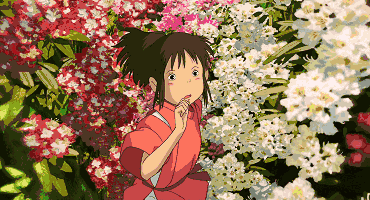
(Note: The pictures in this article are from the Internet. )
This paper is a comprehensive compilation from China’s book "Who are these flowers and flowers?"? Author: Xu Wenxiu, Wuhan Botanical Garden, Chinese Academy of Sciences
This article is from "China Popular Science Expo", please indicate the source.
Editor: Zhao Panpan
Reporting/feedback